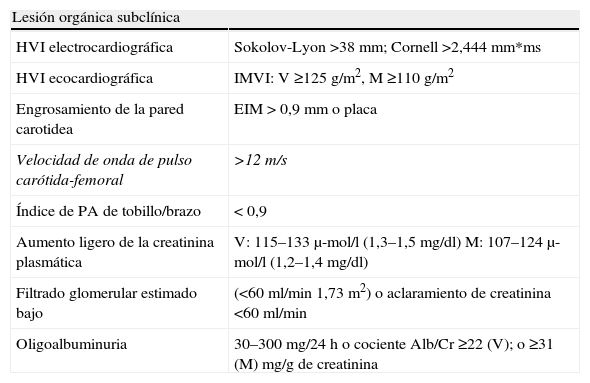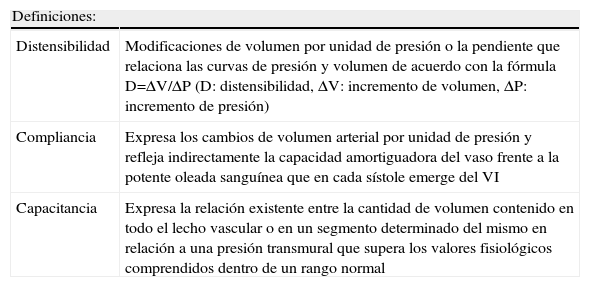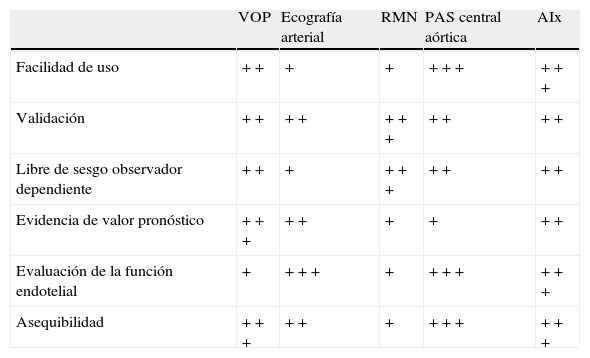La enfermedad cardiovascular (CV) principal causa de morbimortalidad en el mundo desarrollado, es consecuencia del proceso continuo y progresivo de la arteriosclerosis que se inicia con el daño vascular. Hasta hace poco tiempo, la facilidad de obtención de las medidas de PA periférica y su correlación con el desarrollo de episodios CV, dejaron a un lado la utilización de métodos que evaluasen directamente los vasos. Pero recientemente se han introducido un gran número de métodos no invasivos para el estudio del daño arterial, de entre los cuales el análisis de la rigidez arterial sería un buen marcador de enfermedad arterial precoz con un valor predictivo y pronóstico reconocido en la literatura. El valor de la velocidad de la onda del pulso a nivel del eje aórtico medido mediante tonometría es el único método de determinación de rigidez arterial avalado por las guías 2007 para el manejo de la HTA de las sociedades europeas de HTA y cardiología, suponiendo un importante marcador pronóstico de riesgo y una buena herramienta para la detección de enfermedad precoz, que nos permitirá una mejor caracterización del daño CV real y una intervención más apropiada y rápida sobre los individuos afectados. Quedaría todavía por acabar de determinar si la información añadida que nos aporta la medida de la rigidez arterial justifica un uso más amplio de esta en la práctica clínica habitual y el efecto real de los fármacos sobre estos parámetros así como su traducción en la futura aparición de episodios CV.
Cardiovascular (CV) disease, the principal cause of morbidity and mortality in the developed world, is the result of the continuous and progressive process of arteriosclerosis that begins with vascular damage. Until recently, as a consequence of the easiness of peripheral blood pressure measurements and of its correlation with the development of CV events, the importance of using methods that have directly evaluated the vessels has been overlooked.
However, recently, many non-invasive methods have been introduced for the study of arterial damage. Among these, the analysis of arterial stiffness (AS) that would be a good early marker of arterial disease with recognized predictive and prognostic value in the literature. The pulse wave velocity (PWV) value of the aortic axis measured with a tonometer is the only method to measure AS supported by the 2007 guidelines for the management of Arterial Hypertension of the European Societies of Arterial Hypertension and Cardiology. It is an important prognostic marker of risk and a good tool for the early detection of disease, which allows for better characterization of true CV damage and a more appropriate and rapid intervention on the affected individuals. It remains to be determined if the added information provided through the measurement of AS justifies its more extensive use in the usual clinical practice and the real effect of the drugs on these parameters as well as their meaning in the future occurrence of CV episodes.
Artículo
Comprando el artículo el PDF del mismo podrá ser descargado
Precio 19,34 €
Comprar ahora










